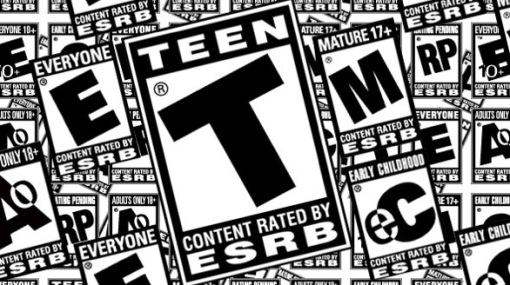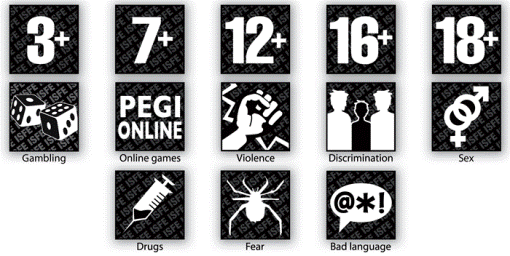[strong-heading url=”#” ] Region Wide Game Censorship//+[/strong-heading]
At the time of purchasing a video game, most people disregard the small black content warning label located on the cover of the game disk. This warning label represents the ratings of the game. Albeit, most people are not aware of these game ratings, but it is imperatively crucial to be aware of such warning labels if you are purchasing a game for your children.
These game ratings are based on age, just like a file censor board, but the symbol may vary within different countries. The game ratings on the packaging let you know what to expect from them in terms of content. If you don’t want to be taken by surprise by the content contained therein, or let your kids play games you don’t want them exposed to, one needs to be informed by the different standards and game ratings they’re likely to encounter prior to making a final purchase.
ESRB
The Entertainment Software Rating Board, is a self-regulatory organization that issues ratings for gamers and entertainment software that are released in the United States, Canada and Mexico. This is also the rating system that appears most frequently at the beginning of video game trailers and previews on the internet. The ESRB uses letters for ratings

These games have pretty much no offensive content and are safe to be played by very young children. Educational games and games featuring characters like Nemo and Winnie the Pooh usually fall under this rating.
Games rated E might contain extremely limited cartoon violence, if at all, and are hence safe for most kids to play. Most sports games and sim racers fall under this category, as do franchises like Mario and Little Big Planet.
As the name implies, these games are considered unsuitable for children less than 10 years of age to play because of mildly suggestive themes, the possible inclusion of blood, violence and mild language. Think of it as the video game equivalent of the Parental Guidance rating for movies and TV shows.
Considered safe for people aged 13 or more, this rating is given to games that feature a lot more violence, suggestive themes, gambling or rare used of mild language. Recent examples of games with this rating include the uncharted series and Batman: Arkham Asylum.
These games are very likely to have copious amounts of sexual themes, blood, violence or foul language. Several US retailers requires Age Identification to sell games with this rating to people, something that is not followed here, so be on our toes. Call of duty, halo and grand theft auto games fall under this category.
A no-brainier, these games are only to be played by adults, Expect nudity, extreme violence or excessive foul language. These games are extremely rare though, because console manufacturers usually don’t allow games rated AO to be published on their platform. GTA: San Andreas and Manhunt 2 were toned down once threatened with this rating.
Games under this category have been submitted to the ESRB for rating, but don’t have one yet. This is usually only found in pre-release promotional material like trailers and ads. Once rated, the material has to be changed to reflect the actual rating.
PEGI
The Pen European Game Information rating covers games released in Europe, and is the rating you’re most likely to encounter here in India, because [highlight-black]we fall under PAL region for video games.[/highlight-black] PEGI uses five age categories and eight images that describe in-game content. The age categories are self-explanatory, really. In addition to the age ratings, PEGI also provides content descriptions in the form of eight images that make it onto the packaging if that type of content is present in the game.
CERO
[infobox title=”CERO Ratings”]One of the two organizations that rates video games in Japan, CERO only rates games released on consoles, its ratings are based on alphabetic levels, in a manner much like ESRB’s./ the five levels are A – for all age group, B – 12 and above, C – 15 and above, D – 17 and above and Z – 18 and above only. [/infobox]









